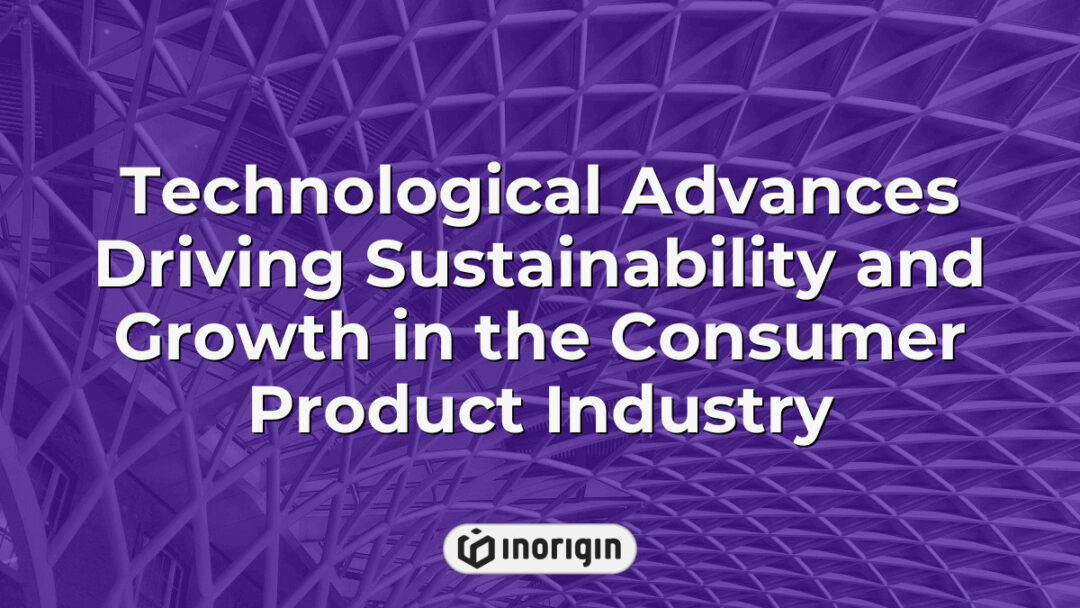The consumer product industry stands as a pivotal domain within the global economy, characterized by its dynamic interplay of innovation, marketing strategies, and shifting consumer preferences. As a multifaceted sector encompassing a vast array of goods—from everyday household items to luxuries—this industry not only shapes consumer experiences but also influences cultural trends and economic policies. In an era marked by rapid technological advancements and evolving sustainability demands, the consumer product industry faces both unprecedented challenges and remarkable opportunities for growth. Understanding the forces that drive this sector is essential for comprehending the complexities of modern consumption and the broader implications for businesses and society at large.
| Aspect | Key Takeaway |
|---|---|
| Industry Overview | The consumer product industry drives global economic growth through continuous innovation and evolving consumer preferences, influencing both culture and commerce. |
| Emerging Trends | Sustainability commitments and digital transformation are reshaping the consumer product industry, demanding adaptive marketing and production strategies. |
| Technological Innovation | Advanced technologies like AI, automation, and data analytics enable personalized product development and optimize manufacturing efficiency. |
| Market Challenges | Companies must navigate changing consumer demands, regulatory frameworks, and competitive pressures to maintain relevance and growth. |
| Growth Opportunities | Aligning product design and engineering with sustainability and ethical practices presents pathways for market differentiation and customer loyalty. |
| Sustainability Impact | With around 75% of consumers willing to adjust habits to reduce environmental impact, eco-conscious product development is essential. |
| Future Strategy | Balancing cost-efficiency with sustainable innovation and transparent communication will be vital for long-term success in a dynamic marketplace. |
Current Trends Shaping the Consumer Product Industry
Current trends shaping the consumer product industry reveal a complex interplay of factors that influence consumer behaviour and purchasing decisions. Recent analyses highlight significant shifts towards sustainability and digital engagement, reflecting a broader recognition that ethical production and convenience are becoming non-negotiable in the consumer goods sector. For instance, research indicates that approximately 66% of global consumers are willing to pay more for sustainable brands, underscoring the increasing importance of corporate social responsibility in the cpg industry trends. Furthermore, the rise of e-commerce, accelerated dramatically during the COVID-19 pandemic, has fundamentally altered how products reach consumers; Deloitte’s 2023 report projected that online retail sales would surpass $1 trillion in the United States alone. As these dynamics play out, economic predictions suggest that inflationary pressures might continue to challenge growth, compelling companies to adapt through innovative pricing strategies and enhanced customer experiences. Through this lens, it becomes clear that the consumer product industry is undergoing transformational changes that demand vigilant responsiveness from businesses aiming to thrive amidst evolving market conditions.
Innovations and Technological Advances
The landscape of innovations and technological advances in the consumer product industry is increasingly shaped by a sophisticated understanding of consumer behaviour and expectations. This evolution is evident through several key trends that exemplify a shift towards consumer centric innovation, which fundamentally alters how products are developed and marketed. First, companies are investing heavily in digital capabilities, allowing them to gather and analyse consumer data more effectively than ever before, leading to personalised marketing strategies. Second, the rise of automation in manufacturing processes, driven by advancements in artificial intelligence and machine learning, has improved efficiency and quality control, thereby meeting the rising demands for quick and consistent product delivery. Third, the integration of advanced materials and sustainable practices is becoming commonplace, reflecting a growing awareness of environmental impact that consumers are increasingly prioritising.
- Companies leverage big data analytics to ascertain consumer preferences
- Automation in product lines helps to maintain consistent quality and speed
- Sustainable practices are gaining traction in response to consumer demand for eco-friendly products
These transformations underscore the importance of aligning product development with the new consumer ethos, which values authenticity, sustainability, and engagement. The implications of these innovations extend beyond just the manufacturing floor; they influence marketing strategies, brand relationships, and customer loyalty metrics. As the industry continues to adapt to these technological advances, the fusion of consumer insight and technological prowess will likely remain a defining characteristic of future developments. The ability to anticipate trends and respond accordingly may determine the success or failure of businesses within this highly competitive market.
Challenges and Opportunities for Growth
The challenges and opportunities for growth within the consumer product industry present a complex array of dynamics that businesses must navigate. On one hand, organisations face significant hurdles such as fluctuating consumer preferences, heightened competition, and evolving regulatory environments. These factors contribute to a decreased volume of trade, compelling firms to rethink established strategies. On the other hand, there are ample opportunities for innovation and the forging of new relationships, particularly in responding to consumer demands for sustainability and ethical production practices. To illustrate the crucial nature of these challenges and opportunities, consider the following points: 1) The global market for consumer goods reached approximately $40 trillion in 2022, highlighting both the scale and the stakes involved; 2) A survey indicated that 78% of consumers are willing to switch brands if they find one that aligns better with their values; and 3) New technologies, including AI and blockchain, have enabled unprecedented efficiencies and transparency in supply chains, marking a shift in how relationships are built and maintained. Ultimately, the landscape in which these organisations operate is continuously shifting, underscoring the importance of adapting strategies that address both challenges and potential growth pathways while fostering new relationships that align with changing consumer behaviours and preferences.
Sustainability Practices and Consumer Preferences
The consumer products industry has increasingly prioritized sustainability, with research indicating that approximately 75% of consumers are willing to change their shopping habits to reduce environmental impact. This shift in consumer preferences reflects a growing awareness of environmental issues and the necessity for businesses to adapt accordingly within this framework. For instance, household goods manufacturers are not only seeking to create products that meet consumer demands but are also integrating eco-friendly practices throughout their supply chains. As the market evolves, companies that invest in sustainable practices—such as using recycled materials or implementing energy-efficient production methods—stand to benefit from enhanced brand loyalty. Engaging effectively with individuals and households therefore becomes imperative, as consumers are more informed and discerning than ever before, placing pressure on brands to align with their values while still offering quality consumer products. Consequently, the interplay between sustainability practices and consumer preferences is reshaping the strategies and operations of businesses within this sector, driving not just ecological responsibility but also market competitiveness.
Future Predictions and Industry Outlook
The future predictions and industry outlook for the consumer product sector are shaped by multiple interrelated factors, notably the world economy and changing consumer preferences. With a decade of decline in certain areas, the consumer packaged goods industry faces a significant challenge in adapting to evolving market demands. Forecasts indicate that sustainability practices will continue to exert substantial influence on purchasing decisions; many consumers are increasingly prioritising environmentally friendly and ethically sourced products. In this context, companies will need to innovate not just in product development but also in marketing strategies to resonate with a consumer base that is becoming more discerning. As economic pressures, such as inflation and supply chain disruptions, also play a role, a nuanced approach that balances cost management with sustainability will be necessary in navigating these turbulent waters. The implications for businesses within the consumer product sector are profound, as future strategies will need to align closely with both global economic trends and individual consumer expectations.
A key strategy for businesses in the consumer packed goods industry will be to invest in transparent communication about sustainability efforts; this transparency not only fosters trust but also invites more informed consumer choices. Understanding the motivations driving consumer preferences today could illuminate pathways towards recovery and growth in this challenging environment. Businesses that proactively adapt to these shifting tides are more likely to thrive in the evolving marketplace.
Frequently Asked Questions
What are the key players in the consumer product industry?
In the consumer product industry, an intriguing statistic reveals that the global market was valued at around $9.5 trillion in 2021, with expectations of exceeding $14 trillion by 2025. This significant growth highlights the competitive nature of the sector, dominated by key players who shape market trends and consumer preferences. Companies like Procter & Gamble and Unilever lead the pack, known for their extensive portfolios in personal care and household products. Additionally, organisations such as Nestlé, a prominent figure in food and beverage, and Coca-Cola, a key player in non-alcoholic beverages, illustrate the broad spectrum of the industry. The rise of e-commerce has further transformed distribution methods, with firms like Amazon emerging as influential forces, altering how products reach consumers. As the dynamics of this industry evolve, it becomes evident that understanding the leading players is crucial for comprehending broader market movements and consumer behaviors. Such insights provide a more nuanced view of industry interconnections and the implications of their strategic decisions on global consumption patterns.
How do global economic conditions affect consumer product sales?
Global economic conditions exert a significant influence on consumer product sales, affecting both demand and pricing structures across various categories. When economic indicators, such as GDP growth or unemployment rates, fluctuate, consumer behaviour often shifts in response. For instance, during times of economic prosperity, individuals typically exhibit greater confidence, leading to increased spending on non-essential goods; consequently, brands in sectors like luxury items or electronics may witness sales surges. Conversely, in periods of recession, a contraction in consumer spending can be observed, often prompting firms to adjust their pricing strategies, perhaps by introducing discounts or utilising promotional campaigns to entice budget-conscious shoppers. Additionally, external factors such as inflation can lead to price hikes that further impact purchasing decisions, resulting in changes to inventory management and supply chains. This interplay between economic conditions and the consumer product market underscores the necessity for companies to remain agile and responsive to shifting economic landscapes to maintain market competitiveness and profitability. Measuring the effects of these conditions will be vital for forecasting future sales trends and ultimately deciding on production capacities, marketing strategies, and distribution channels. The dynamic nature of consumer behaviour relative to economic variables highlights the complex relationship between market forces and individual purchasing patterns, necessitating ongoing research and informed decision-making.
What role does branding play in the consumer product industry?
Branding serves as a fundamental element within the consumer product industry, influencing both perceptions and purchasing decisions. To begin with, branding establishes an identity that differentiates products in an increasingly crowded marketplace. This differentiation is crucial; consumers are often inundated with options, and without a strong brand presence, products risk becoming mere commodities, lost amidst competitors. Furthermore, effective branding generates an emotional connection with consumers, which can foster loyalty that is not easily swayed by market fluctuations. This emotional bond can have tangible effects, such as increased customer lifetime value and positive word-of-mouth marketing, enhancing a brand’s strength in the long term. Consequently, a robust branding strategy does not only communicate a product’s benefits but also encapsulates the aspirations and values that resonate with its target audience.
- Consumers feel a sense of belonging with brands that reflect their values
- Emotional connections can lead to brand loyalty that lasts for years
- A well-developed brand narrative can inspire trust and confidence
- Recognition of a familiar brand often brings comfort in uncertain times
The significance of branding extends beyond mere identification; it shapes consumer experiences and can dictate market dynamics. As businesses strive to create unique brand identities, the repercussions of branding efforts can reverberate through every aspect of the consumer journey. The balance between emotional resonance and practical value becomes essential in sustaining a brand’s relevance amid shifting societal trends and consumer preferences. This complex interplay continuously reshapes the consumer product landscape, demonstrating that branding is not simply an accessory but rather a core strategic component.
Conclusion
In conclusion, an analysis of the consumer product industry reveals the complexities and dynamics that shape market behaviors. By employing visual representations, such as graphs and charts, the intricate relationships among consumer preferences, competition, and innovation become more apparent, ultimately enhancing comprehension and facilitating effective decision-making within this multifaceted industry.
Related posts:
- Maximizing ROI with a Tailored Search Engine Marketing Product for Your Business
- The Product Marketing Engineer’s Role in Driving Market-Ready Innovations at Inorigin
- How Can Color Theory Influence Product Perception to Elevate Brand Impact and Consumer Emotions
- What Are the Key Factors to Consider in Product Design for Global Markets? Balancing Cultural Adaptation, Compliance, and Market Dynamics
- Product Life Cycle Stages and Their Impact on Product Design and Market Success
- Acute email ids production engine Elevating Targeted Email List Generation with Precision and Efficiency




